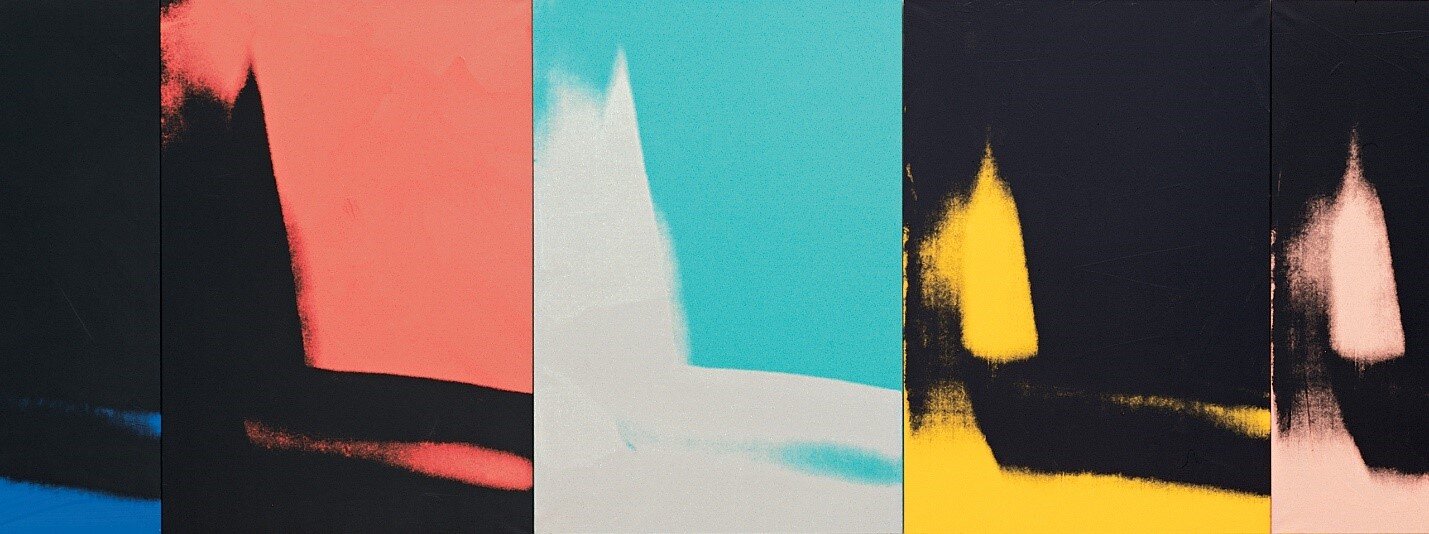WARHOL - The Brand and Man in Pop Art
Warhol. The name that became synonymous with art celebrity was originally a bit different. Andrew Warhola, Jr. was born to Austro-Hungarian immigrant parents in a working-class neighborhood of Pittsburgh, Pennsylvania. Warhol’s accomplishments and influence are unmatched in the twentieth century; he was ubiquitous. Decade by decade, he increased his influence over art and pop culture as he pushed mediums in new and interesting ways, empowering a generation of friends and colleagues to work alongside him. His work has continued to inspire artists to the present day, as we grapple with and reflect on the realities of our commercial world.
Artist Quin Stone’s Marlboro Print Set (2018), inspired by Warhol’s style and seriality.
Formally educated in commercial art at Carnegie Mellon, Warhol began work as a shoe illustrator, developing a strong relationship to advertising and popular media. He always seemed to have a different perspective on life and the popular image, having been enchanted by radio and movie stars as a child. After he was nearly assassinated by a mentally ill acquaintance in 1968, Warhol would surmise: “The movies make emotions look so strong and real, whereas when things really do happen to you, it’s like watching television—you don’t feel anything.” A constant fascination with pop culture, the American image, and raw emotions characterize Warhol’s entire body of work, and demonstrate why he felt compelled to create art based on the popular icons and brands of the day.
Warhol painting a BMW M1 “Art Car” in 1979, on commission from the automobile giant.
Warhol would work on any subject matter, from soup cans to civil rights to celebrities, and he saw no problem with taking exorbitant payments for his work. There was no “selling out” for Warhol; he viewed products, advertising, and making money as art. Some of his most iconic works were of the world-famous, like Marilyn Monroe (1967) and Mao Zedong (1986) or iconic American brands like Campbell’s Soup (1962). These works could be appreciated just as aesthetic and ironic statements, glamorizing common images as fine art, but often contained subtle cultural criticism. His tastes could certainly skew towards the abstract as well, showing his interest in new screenprinting techniques. Screenprinting, or silkscreening, is a printmaking process where stencils are placed over a canvas or fabric and ink is applied over top through a mesh. The stenciled portions should remain free of ink, but over many uses, the materials will fray and bleed. This creates interesting irregularities that may not be ideal on a t-shirt, but could be great in a gallery. He aimed to remove the human element from much of his work, fascinated by the consequences and ripple-effects of automating and mass-producing art and what that said about mass consumer society.
A short section of the 102 canvases of Warhol’s Shadows (1978-9) silkscreen series.
Warhol’s work was inseparable from his friends and collaborators, and the New York arts scene which he helped build. His famous New York studio was called The Factory, and through the doors streamed a constant flow of artists, actors, performers, and more to work with Warhol and connect with his network. Combined with his presence at the Studio 54 nightclub and friendships with major designers like Halston, Warhol helped bring gay and queer culture to the forefront of the pop scene. He used his newfound pop culture stardom in the 1960’s to promote his “Warhol Superstars,” collaborators held in high esteem, many of whom would be recognized later in Lou Reed’s hit single “Walk on the Wild Side.” Lou Reed himself was a graduate of the Warhol academy; his previous band, indie greats The Velvet Underground, were managed by Warhol and served as The Factory’s house band. Warhol developed a close friendship and artistic partnership with Jean-Michel Basquiat and Keith Haring, a power trio of New York art. Warhol was influenced by their distinct styles and helped them connect to the powerbrokers of the New York arts scene. Many famous names and to-be-famous faces came in contact with this trio; one of Basquiat’s girlfriends who came by The Factory was a then-unknown singer named Madonna. Through his time as an artist and a public figure, Warhol redefined the role of the artist in a new commercial world. His art pushed boundaries, challenging notions of what fine art should be and fusing the commercial and critical worlds into one neon-hued canvas.
(From left) Jean-Michel Basquiat, Keith Haring, and Andy Warhol.
At Jedidiah Gallery, shop Warhol and our roster of similar artists like Quin Stone, Andrew Lummus, and Jung Hoon Park.




